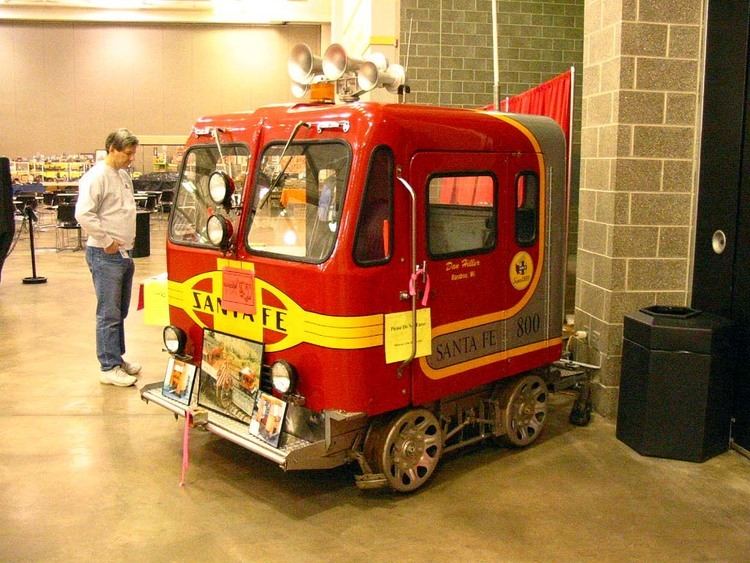 | ||
A speeder (also known as railway motor car, putt-putt, track-maintenance car, crew car, jigger, trike, quad, trolley or inspection car, and also known as a draisine (although that can also be unpowered) is a maintenance of way motorized vehicle formerly used on railroads around the world by track inspectors and work crews to move quickly to and from work sites. Although it is slow compared to a train or car, it is called speeder because it is faster than a human-powered vehicle such as a handcar. Motorised inspection cars date back to at least 1896, when it was reported that the U.S. Daimler Motor Company created a gasoline-powered rail inspection car capable of 15 mph.
Contents
In the 1990s, speeders were replaced with trucks (usually pickup trucks or sport utility vehicles) using flanged wheels that could be lowered for on-rail (called road-rail vehicles or hi-rails for highway-railroad). Speeders are collected by hobbyists, who refurbish them for excursions organized by the North American Railcar Operators Association in the U.S. and Canada and the Australian Society of Section Car Operators, Inc. in Australia.
U.S.
Fairmont used three letters to designate car types. "S" was a Standard Series" section car; "A" was an "Advanced Series" section car and "M" was the "Master Series" section car. They also used a "category" name for motorcars. "Light Inspection" or 1-2 men, were car models: M9 nicknamed "Safe Easy", MM9, MR9, 59, M17, and MM17. "Inspection" or 1-4 men, were models "Roadmaster", M12, M16, M19 nicknamed the Safety Quick", MT19, and the 150. "Light Section" or 1-6 men, the M1, and M14 also called the "Light Section Car". "Section" or 1-8 men, were models "Dreadnaught", M2, 75, and S2. "Heavy Duty Section" or 1-8 men, the A2. "Gang" or 1-12 men, MT2, ST2, A2, AT2 and A3. "Extra Gang" or "B & B" 1-12 men, MX3, MX30G, MT2, A4, AF4, and A6. Final group, "Large Extra Gang" or "Hump" 1-12 men, models A6, A7, A8.
Canada
Various railways and their workshops also manufactured speeders. Often these were a copy of commercially available cars, such as Wickham and Fairmont.
Dimensions
Approximate dimensions of a common speeder car are given below. Due to the variety of base models and customization these are not fixed numbers. These values are from a Fairmont A4-D.
